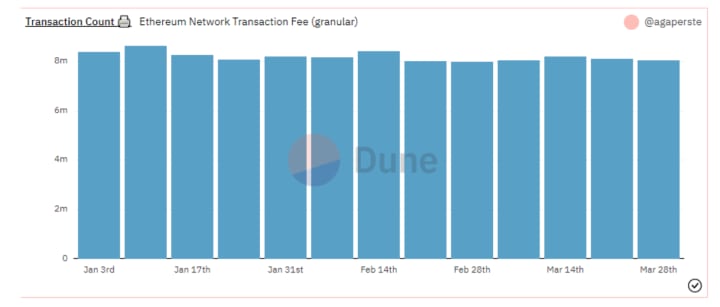The EVM Compatibility Chronicles Part I
Journey to build EVM compatibility

Did you know that by June 2022, there were already over 3,000 dApps on Ethereum, and more than 1.45 million smart contracts were deployed in the same year? And this number just keeps on growing!

With such a vast and rapidly expanding development ecosystem, there is no doubt that Ethereum Virtual Machine (EVM) Compatibility is significant for any project in Web3. But there's a catch to it!
Do you think a large developer community is the only reason that makes it necessary for blockchain projects to become EVM-compatible? Well, there are other factors contributing to the growing need for EVM compatibility. At least that's what most project teams working in Web 3 feel like.
In order to delve deeper into the factors surrounding EVM compatibility development for Humanode (and obviously for other projects in Web 3), we have crafted a series of articles having expert insights divided into four segments.
The initial article will address the fundamentals of EVM and the advantages of creating EVM compatibility for other blockchain endeavors in a broader context.
In the second part, we’ll take insights from MOZGIII, Humanode’s Tech Lead to explore the major driving factors that led Humanode to build EVM compatibility.
Going forward, In the final two parts, we’ll attempt to get answers from MOZGIII to understand the current stage of development for the EVM-compatible Humanode blockchain and how far along it is in the process.
This engaging series will prove enjoyable for readers seeking not only an understanding of EVM compatibility but also a glimpse into the development process of Humanode itself.
Enthusiasts seeking to gain valuable insights from experts will find ample opportunities to acquire knowledge and apply it to their own products.
So how about we start with the basics first?
Let's talk about What EVM is and what an EVM-compatible chain means?
The EVM is a crucial component of the Ethereum blockchain, acting as the engine that powers smart contract execution. It is a Turing-complete virtual machine responsible for executing smart contracts on the Ethereum blockchain. EVM serves as the runtime environment for these contracts, allowing them to operate securely and independently on the decentralized network. Blew your head off?
Here's an illustration of how EVM works.

Still too technical? Here’s another way to think about it: Imagine EVM as the set of rules for a widely popular board game where the Ethereum network represents the original game board, and various game pieces symbolize decentralized applications (dApps) and smart contracts. Players (developers) use these rules to create strategies and interact with one another during the game.
Now, EVM-compatible networks are like new editions or variations of the original board game, each with its unique design, game board, and additional features. Despite these differences, these new editions adopt the same fundamental rules (EVM) from the original game. It allows players (developers) who are familiar with the original game (Ethereum) to quickly understand and adapt to the new editions (EVM-compatible networks) and vice versa.
So far, we've covered the basics of EVM and EVM compatibility, right? Now let's discuss why EVM compatibility is vital.
Why EVM compatibility?
EVM-compatible chains have become increasingly important in the blockchain ecosystem for several benefits and to deal with the shortcomings of the Ethereum ecosystem. Here's how:
Ethereum, as the first blockchain to deploy smart contracts, is considered the standard among competing blockchains. However, its size and massive user base have resulted in scalability issues, including slow transactions and high gas fees.
Although Ethereum 2.0 aims to address these problems, alternative blockchains have emerged to capitalize on Ethereum's current limitations. As an example, the Polygon network which offers much lower gas prices and transaction fees became increasingly popular among the blockchain development community.
Another main reason is the ability to leverage the extensive Ethereum developer community. Ethereum boasts one of the largest and most active developer communities in the blockchain space. According to a recent survey, 46.5% of all the solidity developers use solidity for development on Ethereum Mainnet only.

By being EVM-compatible, other chains can attract developers already familiar with Ethereum's programming languages, tools, and libraries to build and deploy applications on their platforms. This helps expand the ecosystem and fosters innovation across multiple blockchains.
Additionally, the ability to seamlessly communicate, interact, and exchange value between different blockchain networks is crucial for the long-term success of the decentralized ecosystem.
EVM-compatible chains can easily connect with Ethereum and other EVM-compatible networks, enabling the creation of cross-chain applications, asset transfers, and communication between various blockchain networks. This enhances the overall user experience and creates a more interconnected ecosystem.
EVM-compatible chains also allow for the easy adoption of existing smart contracts and decentralized applications (dApps) built on Ethereum. Developers can port their existing Ethereum-based applications to other EVM-compatible chains with minimal modifications. This reduces the barrier to entry for new chains and helps accelerate the growth and development of their ecosystems.
Furthermore, EVM-compatible chains can tap into the rapidly growing DeFi ecosystem on Ethereum. This enables seamless integration with decentralized exchanges, lending platforms, and other DeFi protocols, resulting in increased liquidity, greater market depth, and new opportunities for users, developers, and investors alike.
In summary, EVM-compatible chains play a vital role in expanding the blockchain ecosystem by leveraging the existing Ethereum developer community, fostering interoperability, and enabling the easy adoption of existing applications and smart contracts.
Some of these reasons are why we are keen on enabling Humanode's EVM compatibility. However, according to MOZGIII, there are other core reasons that we must consider at Humanode. Let's keep those for part II of The EVM Compatibility Chronicles. ;)
Also published here.
About the Creator
Shahmeer Khan
Research Analyst | Humanode





Comments
There are no comments for this story
Be the first to respond and start the conversation.